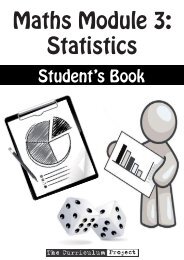Student's Book â Dec 2009 (5.9mb) - The Curriculum Project
Student's Book â Dec 2009 (5.9mb) - The Curriculum Project
Student's Book â Dec 2009 (5.9mb) - The Curriculum Project
You also want an ePaper? Increase the reach of your titles
YUMPU automatically turns print PDFs into web optimized ePapers that Google loves.
C. Match the summaries with the numbered paragraphs in the text:I. <strong>The</strong> merchant class consisted of local and foreign traders.II. Trade and port cities in Southeast Asia developed. New jobs appeared andthree classes developed.III. In the beginning, it was very easy to move from one class to another (youcould set up a business and join the merchant class).IV. <strong>The</strong> ruling class in most Southeast Asian nations were kings.V. In Southeast Asia there were different priests for all the different religionsD. List all the different jobs that the text mentions.E. How many different religions are mentioned in the text?F. How did trade help the development of new classes in Southeast Asian societies?2.5 THE EARLIEST RELIGIONKEY WORDScoexist (v) – live together, side by side, at the same timeoffering (n) – when you give something to a god or spirittolerant (adj) – to understand or accept beliefs, ideas, lifestyles that are different from yoursversion (n) – one way of doing things, a type of somethingworship (v) – pray, show your respect to a god or spiritpreviewbrainstorming,mind-mapA. What is religion?B. What religions do you know? List all you can think of.C. Do you know where each of these religions originated?D. What else do you know about each of these religions? Make a mind-map. As youread more about religion, add as much information as you can to your mind-map.<strong>The</strong> indigenous religion in Southeast Asia is Animism. People who believe in Animism are calledanimists. Animists worship nature (trees, animals, plants, rivers, mountains, etc.). <strong>The</strong>y believethat things of nature have spirits and can influence and control the life of people. Animist cultsdiffer a lot from place to place, from people to people, from tribe to tribe. Even a very smallcommunity can have their own version of animism. <strong>The</strong>y can worship their own special spiritsthat live in the jungle, in the field, or in their houses. Many Animist cults have spirits responsiblefor each area of life.For example, most Thai people have spirit houses in their yards. <strong>The</strong>y believe that the spiritsthat guard their house live there and bring good luck to the family. Many Chinese shops havea special spirit house in a special place on the floor. Chinese people believe that a special spiritresponsible for business lives there. If they worship it and give it offerings, they will have goodluck in business.Many versions of Animism include ancestor worship. This practice is particularly common inChinese culture. Animism is very tolerant of other religions. It often coexists with Buddhism,Hinduism, Islam and/or Christianity.When new religions began entering Southeast Asia, old animist cults were integrated into them,or just coexisted alongside them. People began following new religions, but they still held manyof their traditional beliefs and kept their old tales and legends.discussionrestatingand applyinginformation,inferringA. Read the text above and explain in your own words what “animism” means.B. What evidence of animist culture can you see in your own community?C. Why do you think animist traditions tend to last even after people have adoptedother religions?16



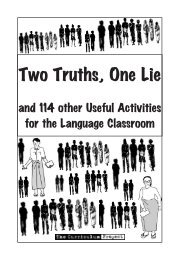
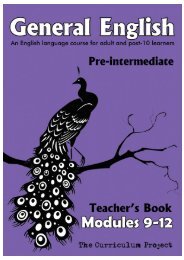



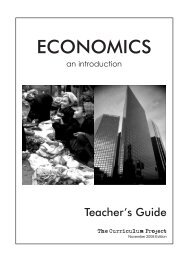
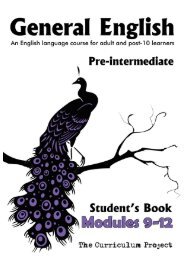



![[Eng] Nov 2012 DRAFT - The Curriculum Project](https://img.yumpu.com/45590859/1/184x260/eng-nov-2012-draft-the-curriculum-project.jpg?quality=85)


